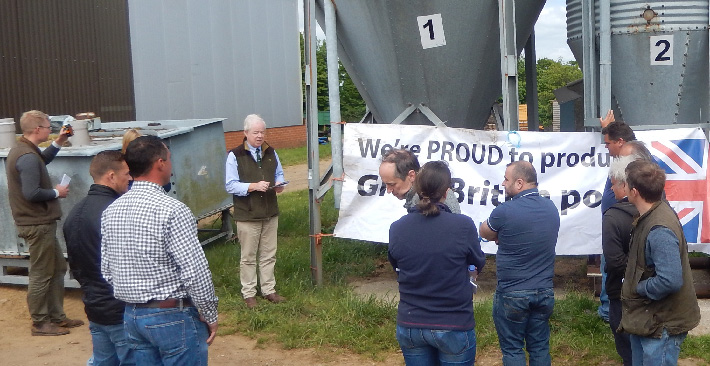It was another tough day for sellers, and although spot bacon prices were no worse than last week, this was little consolation for producers who’re currently losing a hatful of money on every pig leaving their unit.
The rate of descent of the SPP has slowed slightly, only dropping by 0.15p this week to stand at 112.17p. But what’s really needed is a revival in spot prices to start pushing this index price north rather than south.
Weekly contribution contract price elements have generally remained at similar levels, and one very slight crumb of comfort was that the average weight of pigs compiled in the SPP calculation has eased a tad. But a glance at the calendar reveals that the Easter weekend is less than three weeks away; if better demand was to materialise over the Easter holiday period, that might help to offset too many pigs being rolled due to the “short weeks” ahead.
Most spot bacon prices today were in the 100p to 104p/kg range, but very few signs of sellers prepared to take a punishing 90p/kg for spot bacon, which was the case a few weeks ago.
However, German pig prices stood-on, which was relief after last week’s 7c drop.
Unfortunately a 1.5% reduction in the value of the euro, which traded on Friday worth 77.5p, did nothing to help the cull sow trade, with quotes down by 1p to 2p/kg; meaning that most culls were traded in the 55p to 57p/kg range, representing a miserable return for producers looking to replace worn out sows with gilts, or those who have been forced to cull for financial reasons.
Although there has been no flood of herds culling sows yet, following such a long period of negative pig prices, signs are emerging that one or two major decisions are being made to either cut back or depopulate unproductive herds, despite falling feed prices which, in some cases, are a case of too-little/too-late.
Weaner prices continue to reflect the uncertain outlook for finished pig values in the months ahead, although the AHDB 30kg ex-farm weaner average was up by just over £2/head at £37.76/head, but 7kg prices fell from £29.05/head to a new average of £28.79/head.
Some weaner traders are, however, reporting slightly tighter supplies following higher mortality levels in breeding herds, and although it’s an “ill wind”, a reduction in supplies might help to stimulate finished pig demand in the months ahead, especially when coupled with any increase in sow culling rates.
The only bright spot remains the in feed markets where the latest ex-farm spot feed wheat quote published in Farmers Weekly represents a new seasonal low of £97.70/t and these levels were also reflected in the latest futures quotes with May 2016 trading at £102.75/t and July at £104.45/t.
Protein prices have also had a quiet week, with UK rape meal ex-Kent for March delivery trading unchanged at £138/t, but Brazilian soya ex-Liverpool for March delivery recorded a weekly increase of £2/t to £262/t on Friday.
Global soyabean production in 2015/16 is expected to match last year’s record harvest, but global demand for soyabeans is expected to increase by about 4% on the year because of increased usage in the livestock and poultry sectors.
And finally, further evidence of the effect that falling pig prices are having on the UK herd was confirmed by a reduction of 8.4% in the number of gilts in-pig in the December 2015 England pig herd census, with the total number of pigs down by 3.6% to 3.5 million.
However, the overall female breeding herd was up by 1.1%, and the situation hasn’t been helped by our ingenious breeding companies that are finding yet more ways to persuade sows to have larger litters every year. Although these can be a lifeline for hard-pressed producers, at the same time this adds yet more pigs to the system at a time when demand is under pressure, so we all remain between a rock and a hard place.




